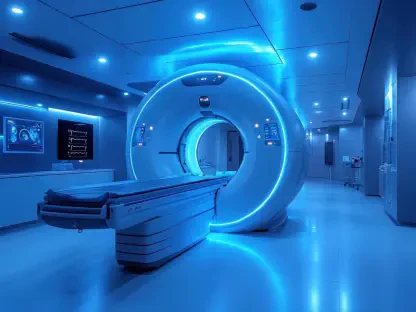Faisal Zain is an influential figure in the healthcare industry, specializing in medical technology. With a wealth of experience in the manufacturing of diagnostic and treatment devices, he has played a crucial role in driving innovation. In this insightful interview, we delve into a recent medical device recall and the implications it has within the industry.
Can you provide a brief overview of the recall involving Centerline’s guidewires?
Centerline Biomedical recently recalled a series of guidewires that are instrumental in vascular procedures due to a fault that could potentially lead to serious injury or even death. The issue involves the coating on the guidewires which can detach and be left inside the patient during medical procedures. This risk of serious harm was significant enough for the FDA to issue a Class I recall notice.
What specific fault has been identified with the Centerline guidewires?
The primary fault identified is the potential for the guidewires to delaminate during use. This means the coating of the guidewires can peel off, presenting a severe risk as these fragments might stay inside a patient’s body post-procedure, necessitating additional medical intervention.
How did the company become aware of the coating issue with the guidewires?
Centerline became aware of the defect through their internal quality control tests and audits. These checks revealed that the coating was prone to peeling, which could compromise patient safety during vascular procedures. Following this discovery, the company issued an urgent medical device recall notice.
What actions has Centerline taken to address the guidewire problem?
To address the problem, Centerline has actively removed the affected devices from the market, requesting customers to return these high-risk guidewires. By retracting the faulty product, they aim to prevent any adverse incidents from occurring and ensure patient safety moving forward.
Have there been any reported cases of serious injuries or deaths due to this issue?
Fortunately, as of now, there have been no reported cases involving serious injuries or deaths as a result of the fault. This proactive approach by Centerline has likely played a pivotal role in mitigating such outcomes.
What are the potential risks or complications if the coating is left inside a patient?
The retention of guidewire coating inside a patient can lead to significant health risks including blockage, infection, or even requiring additional surgeries to remove the debris. This could pose serious threats, extending recovery times and adding stress both physically and emotionally for patients.
How many units of the affected guidewires are currently in commerce, and in which states?
The FDA reports that approximately 80 units of the affected guidewires are in circulation across eight different states. The specific locations remain undisclosed in available documents; however, the retrieval efforts are comprehensive to ensure all units are accounted for.
How did the FDA classify this recall, and what does a Class I recall indicate?
The FDA classified this recall as a Class I, which is the most urgent classification. It indicates that there is a significant chance that the product could cause serious health issues or even death. This classification underscores the potential severity of the device’s fault.
Can you explain the technology behind Centerline’s IOPS Guidewire ATW-2?
The IOPS Guidewire ATW-2 is equipped with sensors that integrate with an intraoperative positioning system. This technology aids healthcare professionals in navigating through a patient’s vascular system, providing a precise map that facilitates efficient catheter placement.
What is the process for FDA 510(k) clearance, and how does it apply to Centerline’s product?
FDA 510(k) clearance involves a review process where a manufacturer must demonstrate that their new device is at least as safe and effective as an already marketed device. For Centerline, this process was successfully navigated by comparing their system to a device from Abbott’s St. Jude Medical, earning clearance in 2019.
How does Centerline’s positioning system compare to Abbott’s St. Jude Medical device?
Centerline’s system uses advanced sensor technology and real-time mapping to place catheters accurately. While Abbott’s device is a comprehensive solution, Centerline’s updated version offers refinements that enhance usability and effectiveness, reflecting ongoing innovation in medical technology.
In what way did Centerline update its system in March after receiving FDA clearance?
After receiving FDA clearance, Centerline introduced updates to improve the system’s accuracy and reliability. These modifications likely include enhancements to the core technology, supporting better outcomes and efficiency in vascular procedures.
Have other medical device companies experienced recalls in this regulatory category?
Yes, major medical device companies like Abbott, Baxter, and Boston Scientific have encountered recalls within this regulatory category. However, most of those were classified as Class II, involving lower risks compared to the severity outlined in a Class I recall.
How do Class I recalls differ from Class II recalls in terms of risk and severity?
Class I recalls are issued for products that could cause serious health issues or death, signifying the highest level of risk. In contrast, Class II recalls concern products that might lead to temporary or reversible health problems where the risk is significantly lower.
What measures is Centerline planning to implement to prevent similar issues in the future?
Centerline is likely reviewing and strengthening their quality control and manufacturing processes to prevent such issues from reoccurring. By addressing potential design flaws and reinforcing internal testing, they aim to enhance product safety and reliability.
Do you have any advice for our readers?
Stay informed and vigilant, whether you’re in the medical profession or a patient. Understanding the potential risks associated with medical devices and consistently seeking updated information can significantly contribute to safe and effective healthcare practices.









